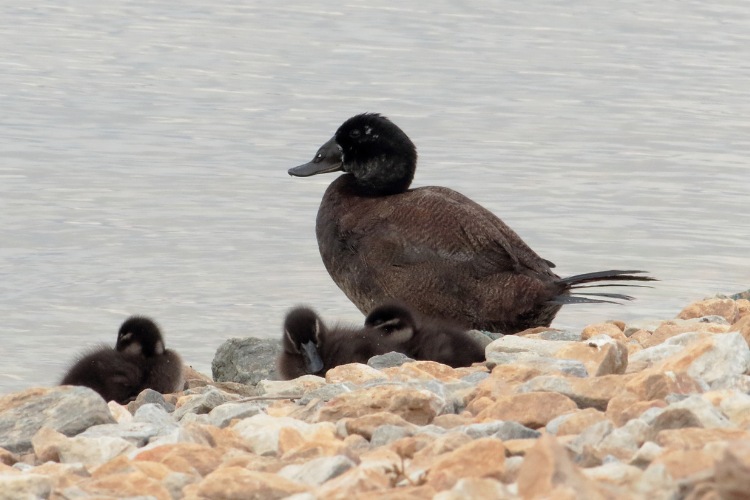Hidrogea and ANSE succeed in attracting breeding white-headed ducks to the Cabezo Beaza wastewater treatment plant
Biologists and volunteers from the Asociación de Naturalistas del Sureste (ANSE), an ecologists' association, confirmed for the first time that white-headed ducks (Oxyura leucocephala) were breeding in the treated water reservoirs at the Cabezo Beaza WWTP (Cartagena).

This achievement comes just two years after an agreement was signed between Hidrogea and the association to install two artificial floating islands with an improved design.
These islands have created patches of marsh plants such as bulrush (Typha sp.), yellow iris (Iris pseudoacorus) and swamp sawgrass (Cladium mariscus), which provide refuge for the birds and protect them from predators. After several weeks in which the presence of three male and four female adult birds on the islands was suspected, ANSE personnel confirmed the sighting of young chicks.
The island chosen by the ducks for nesting was installed last year on World Water Day. Seventeen months on, they have now been occupied by several white-headed ducks, suggesting there could be more females reproducing this year.
With the Cabezo Baeza lagoons, the white-headed duck, which is in danger of extinction and whose population at the wastewater treatment plant is 70, now has a new breeding ground, together with the three previously existing ones in the Region of Murcia (Alhama, Campotéjar and Moreras).
The first floating islands were installed 11 years ago, but thanks to the innovation provided by the two new islands installed as part of the agreement with Hidrogea, excellent results have been obtained in terms of birds use. A marbled duck was spotted last year and the latest census includes a ferruginous duck, which in the words of Jorge Sánchez, a biologist with ANSE, ‘highlights the importance of the Cabezo Beaza WWTP lagoons for three species of water bird classified in Spain as “in danger of extinction”: the marbled, white-headed, and ferruginous ducks’.
He further added that, ‘this shows how promoting biodiversity integrated into wastewater treatment can be achieved with relatively simple measures over reasonable time spans’. The association considers the use of artificial wetlands by birds as a sign of the precarious state of conservation of natural ones.
For his part, Javier Ybarra, CEO of Hidrogea, explained that ‘the reproduction of white-headed ducks in the Cabezo Baeza wastewater treatment plant is a clear sign of the quality of the effluent water and an investment in integration and conservation of the natural heritage while managing the complete water cycle’.
The white-headed duck (Oxyura leucocephala) is a globally threatened duck classified as ‘in danger’ and is listed as a species of interest to the European community in the Birds Directive. Furthermore, both the List of Threatened Species and Regional List of Threatened Species classify it as ‘in danger of extinction’. In the Region of Murcia, a LIFE project was implemented for this species, resulting in the drafting and approval of a species recovery plan which, curiously, included Beaza as an area where it was present but ‘non-nesting’.